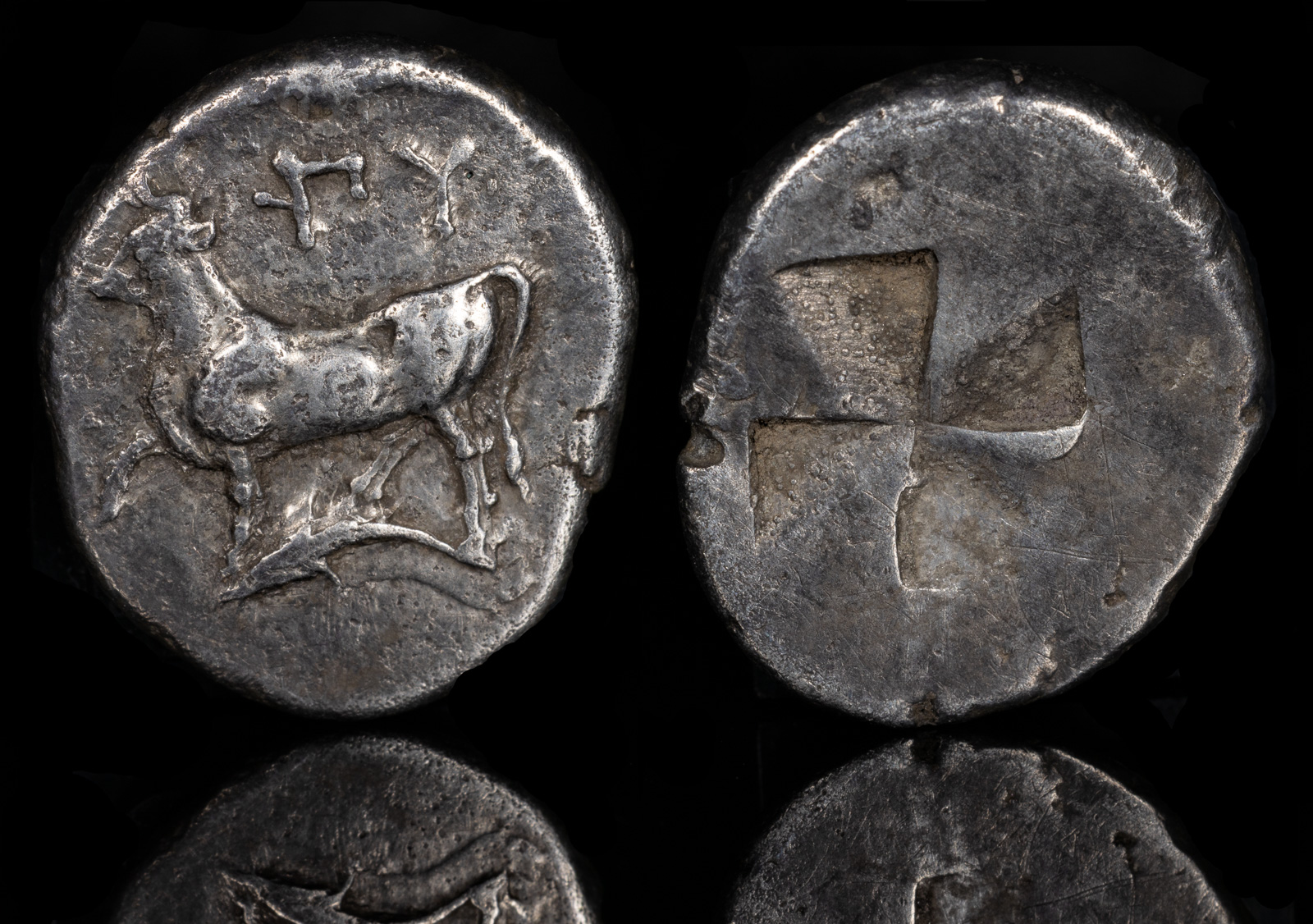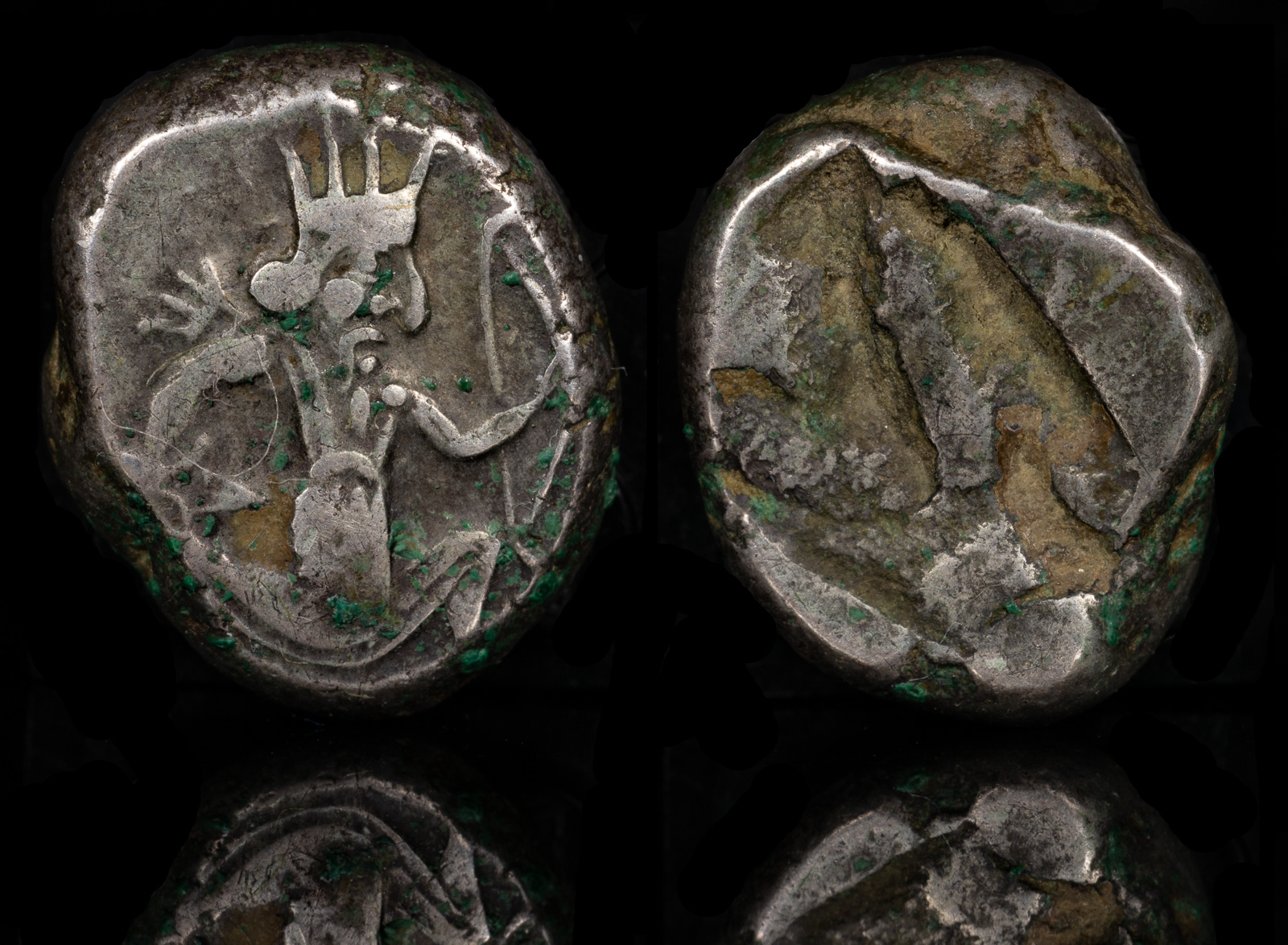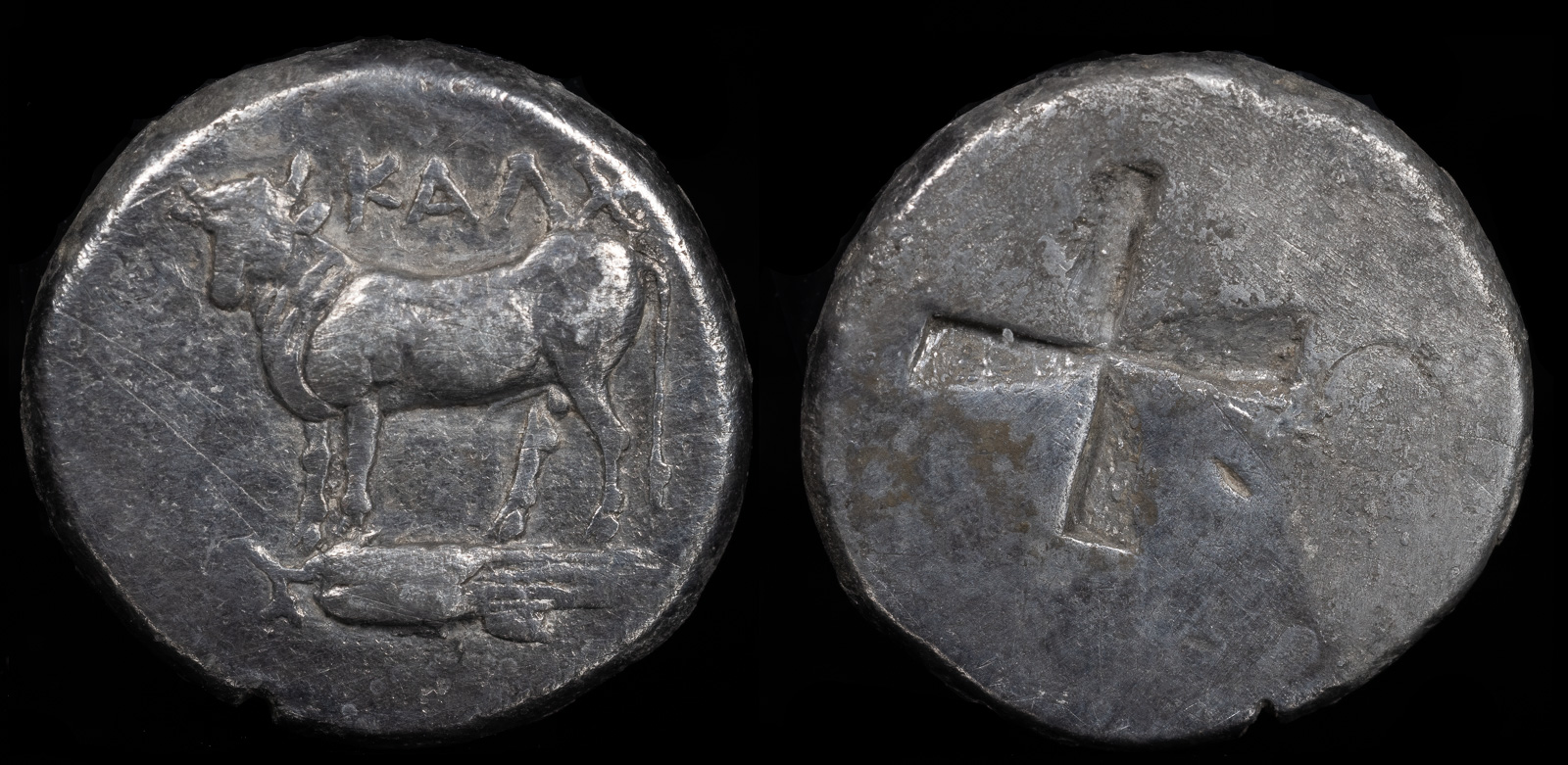Siglos
View All Tags
The word “siglos” derives from the Old Persian term sikkā, meaning “coin.” Each siglos weighed approximately 5.5 grams, aligning with the Babylonian weight standard, which was prevalent in the empire. The coin’s design was relatively simple but emblematic of Achaemenid royal authority. The obverse typically featured an image of the Persian king in a running or kneeling pose, often depicted holding a bow and spear—symbols of military power and divine protection. The reverse was usually left blank or featured a simple incuse punch, reflecting a utilitarian approach to minting.
The siglos was widely circulated across the Achaemenid territories, which facilitated trade and helped integrate the diverse economic systems within the empire. Its widespread use also symbolized the centralization of authority under the Achaemenid rulers, as standardized coinage promoted economic stability and uniformity. This was particularly important in a realm that encompassed numerous cultures, languages, and regional economies.
Following the conquest of the Achaemenid Empire by Alexander the Great in 330 BCE, the siglos gradually disappeared from circulation, replaced by Alexander’s own coinage, which adhered to the Attic weight standard.

Thrace, Byzantion
AR Siglos 340-320 BCE
5.24g 18.02mm
Bull standing left on a dolphin, monogram of Byzantion above. Incuse wind-sail pattern.
SNG Cop 475-477

Achaemenid Kings of Persia
AR-Siglos 5.6 gm, 15mm
Sardis. c. 375-340 BCE
Obv: King r., dagger and bow. Rev: Incuse rectangle
Carradice Type IV C (pl.14, 49); BMC Arabia pl. 27, 19
Ex Akropolis Coins (PeteB)

Bithynia, Kalchedon
340-320 BCE, Silver Siglos
5.20g, 17mm
Bull standing left on grain ear. KAΛX
Mill scale incuse pattern.
SNG Cop 348